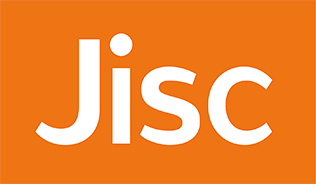Accounting Dilemma and Health Care’s Accounting Control
DOI:
https://doi.org/10.54536/ajebi.v3i3.3559Keywords:
Accounting Dilemma, Health Service, New Public ManagementAbstract
This study aims to describe the phenomenon of accounting dilemma in the accountingization process of health services as part of the implementation of New Public Management in Indonesia. This study uses the case study method in two public hospitals owned by the Provincial Government in Indonesia. The results show that the dilemma is related to the doubts of accountants regarding the implementation of quality control and cost control as the implications of the national health insurance system implemented by the government. Conflicts of interests, idealism, society’s interests, and the demands of the government make various accounting tools is only used as forms of ritual and legitimacy. This study uses a case study in two government hospitals as a portrait of the implementation of accounting for health services in Indonesia. This study portrays the phenomenon of accounting dilemma that occurred and suggested in the next study to produce an accounting system that is in accordance with government-owned health services. The researchers proposed a more appropriate management accounting system to government health services by considering public health sector management accounting (PHSMA). The PHSMA contains (1) the use of an organizational system with privatization at the medium level while promoting social aspects, (2) the use of government funding in the form of health operational funds to support universal health coverage (UHC), (3) using public health indicators as a basis for performance assessment and not merely use financial performance. This study emphasizes that government participation is still needed in supporting health quality improvement programs in the community through full support for health services. The sustainability of national health insurance system must be maintained. The accounting dilemma is a new concept that can be considered in the decision-making process of government institutions and can be followed up in subsequent research. Accounting dilemma is an event where an accounting system or practices should be selected under the pressure from the government, service users, and the management (internal pressure), but all of the options are equally unpleasant, not in accordance with the theory, or not in accordance with the existing data.
Downloads
References
Abernethy, M. A., & Stoelwinder, J. U. (1995). The role of professional control in the management of complex organizations. Accounting, Organizations and Society, 20(1), 1–77.
Andersen, L. B. (2014). Health care cost containment in Denmark and Norway: A question of relative professional status? Health Economics, Policy and Law, 9, 169–191.
Ballentine, J., Brignall, S., & Modell, S. (1998). Performance measurement and management in public health services: A comparison of U.K. and Swedish practice. Management Accounting Research, 9(1), 71–94.
Berg, J. E. (1994). Using experimental economics to resolve accounting dilemmas. Contemporary Accounting Research, 10(2), 547–556.
Bosa, I. M. (2010). Ethical budgets: A critical success factor in implementing new public management accountability in health care. Health Services Management Research, 23, 76–83.
Bourn, M., & Ezzamel, M. (1986). Costing and budgeting in the NHS. Financial Accountability & Management, 2(1), 53–72.
Bourn, M., & Ezzamel, M. (1987). Budgetary devolution in the NHS and universities in the UK. Financial Accountability & Management, 3(1), 29–45.
Bredenkamp, C., Evans, T., Lagrada, L., Langenbrunner, J., Nachuk, S., & Palu, T. (2015). Emerging challenges in implementing universal health coverage in Asia. Social Science & Medicine, 145, 243–248.
Breyer, F., & Haufler, A. (2000). Health care reform: Separating insurance from income redistribution. International Tax and Public Finance, 7, 445–461.
Brorstrøm, B., & Nilsson, V. (2008). Does organization matter? A study of physicians’ ideal organization. Financial Accountability & Management, 24, 193–206.
Chang, L. C. (2006). Managerial responses to externally imposed performance measurement in the NHS: An institutional theory perspective. Financial Accountability & Management, 22(1), 63–85.
Chariri, A. (2011). Financial reporting practice as a ritual: Understanding accounting within an institutional framework. Journal of Economics, Business and Accountancy Ventura, 14(1), 89–106.
Cheng, S. H., Chen, C. C., & Chang, W. L. (2009). Hospital response to a global budget program under universal health insurance in Taiwan. Health Policy, 92, 158–164.
Cook, A. (1995). Management accounting. British Medical Journal, 310(6976), 381–385.
Cremer, H., & Pestieau, P. (1996). Redistributive taxation and social insurance. International Tax and Public Finance, 3, 281–295.
DiMaggio, P., & Powell, W. W. (1983). The iron cage revisited: Institutional isomorphism and collective rationality in organizational fields. American Sociological Review, 48(2), 147–160.
Gambling, T. (1987). Accounting for rituals. Accounting, Organizations and Society, 12(4), 319–329.
Gebreiter, F. (2017). Accounting and the emergence of care pathways in the National Health Service. Financial Accountability & Management, 33, 299–310.
Grzybek, M. R. (2014). Cost accounting models used for price-setting of health services: An international review. Health Policy, 118, 341–353.
Hood, C. (1995). The “new public management” in the 1980s: Variations on a theme. Accounting, Organizations and Society, 20(2-3), 93–110.
Hood, C. (1991). A public management for all seasons? Public Administration, 69(1), 3–19.
Howell, B., & Cordery, C. (2013). From providers to primary health organizations: An institutional analysis of nonprofit primary health care governance in New Zealand. Journal of Public Budgeting, Accounting & Financial Management, 25(1), 4–40.
Hyndman, N., & Connolly, C. (2011). Accruals accounting in the public sector: A road not always taken. Management Accounting Research, 22, 36–45.
Johnsen, Å., Nørreklit, H., & Vakkuri, J. (2006). Introducing a Nordic perspective on public sector performance measurement. Financial Accountability & Management, 22(3), 207–212.
Jones, C. S. (1999). Developing financial accountability in British acute hospitals. Financial Accountability & Management, 15(1), 1–20.
King, R., Clarkson, P. M., & Wallace, S. (2010). Budgeting practices and performance in small healthcare businesses. Management Accounting Research, 21, 40–55.
Kurunmäki, L., Lapsley, I., & Melia, K. (2003). Accountingization v. legitimation: A comparative study of the use of accounting information in intensive care. Management Accounting Research, 14(2), 112–139.
Lapsley, I. (2001). The accounting-clinical interface: Implementing budgets for hospital doctors. ABACUS, 37(1), 79–109.
Lapsley, I. (2007). Accountingization, trust and medical dilemmas. Journal of Health Organization and Management, 21(4/5), 368–380.
Liguori, M., & Steccolini, I. (2017). The power of language in legitimating public-sector reforms: When politicians “talk” accounting. The British Accounting Review, 49(1), 1–13.
Long, M. J., Chesney, J. D., Ament, R. P., DesHarnais, S. I., Fleming, S. T., & Kobrinski, E. J. (1987). The effect of PPS on hospital product and productivity. Medical Care, 25(6), 528–538.
Macinati, M. S., & Pessina, E. A. (2014). Management accounting use and financial performance in public health-care organizations: Evidence from the Italian National Health Service. Health Policy, 117, 98–111.
Malmmose, M. (2015). Management accounting versus medical profession discourse: Hegemony in a public health care debate – A case from Denmark. Critical Perspectives on Accounting, 27, 144–159.
Mancinati, M. S., & Rizo, M. G. (2014). Budget goal commitment, clinical managers’ use of budget information and performance. Health Policy, 117, 228–238.
Modell, S. (2000). Integrating management control and human resource management in public health care: Swedish case. Financial Accountability & Management, 16(1), 33–54.
Newman, S., & Lawler, J. (2009). Managing health care under New Public Management: A Sisyphean challenge for nursing. Journal of Sociology, 45(4), 419–432.
Nuscheler, R., & Roeder, K. (2015). Financing and funding health care: Optimal policy and political implementability. Journal of Health Economics, 42, 197–208.
Nyman, J. A., Feldman, R., Shapiro, J., Grogan, C., & Link, D. (1990). Changing physician behavior: Does medical review of Part B Medicare claims make a difference? Inquiry, 27, 127–137.
Pollitt, C., Harrison, S., Hunter, D., & Marnoch, G. (1988). The reluctant managers: Clinicians and budgets in the NHS. Financial Accountability & Management, 4(3), 227–242.
Pollitt, C., Talbot, C., Caulfield, J., & Smullen, A. (2004). How governments do things through semi-autonomous organizations. Palgrave Macmillan.
Power, M., & Laughlin, R. (1992). Critical theory and accounting. In M. Alvesson & H. Willmott (Eds.), Critical management studies (pp. 113–135). Sage.
Preston, A., Cooper, D., & Coombs, R. (1992). Fabricating budgets: A study of the production of management budgeting in the National Health Service. Accounting, Organizations and Society, 17(6), 561–593
Rapoport, J., Jacobs, P., & Jonsson, E. (Eds.). (2009). Cost containment and efficiency in national health systems: A global comparison. Wiley-Blackwell.
Schleiniger, R. (2014). Health care cost in Switzerland: Quantity- or price-driven? Health Policy, 117, 83–89.
Talbot, C. (1999). Public performance - Towards a new model? Public Policy and Administration, 14(3), 15–34.
Tan, S. S., Rutten, F. F. H., van Ineveld, B. M., Redekop, W. K., & Hakkaart-van Roijen, L. (2009). Comparing methodologies for the cost estimation of hospital services. The European Journal of Health Economics, 10(1), 39–45.
Wei-Yuan Hu, Chien-Fu Yeh, An-Suey Shiao, & Tzong-Yang Tu. (2015). Effects of diagnosis-related group payment on health-care provider behaviors: A consecutive three-period study. Journal of the Chinese Medical Association, 78, 678–685.
Wickings, I., Coles, J. M., Flux, R., & Howard, L. (1983). Review of clinical budgeting and costing experiments. British Medical Journal, 286(6372), 12–15.
Zeidan, R., & Khumawala, S. (2014). Price management in nonprofit hospitals. Journal of Public Budgeting, Accounting & Financial Management, 26(1), 50–80.
Downloads
Published
How to Cite
Issue
Section
License
Copyright (c) 2024 Helmy Adam

This work is licensed under a Creative Commons Attribution 4.0 International License.














